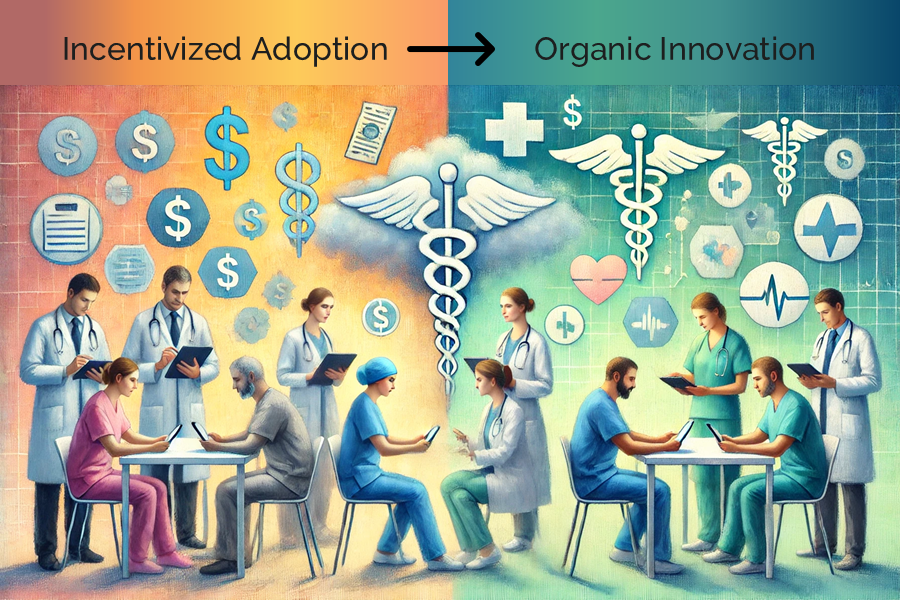Liar, Liar, That's not FHIR®
We all know regulatory compliance plays a pivotal role in technology adoption, especially in the healthcare industry. In my previous blog, I discussed the burning question: Do you adopt the FHIR® API just to meet the Cures Act compliance, or do you adopt it to accomplish its full potential? Your answer to this question will define how much value you can derive from your FHIR API implementation. This value would be significantly higher if your FHIR adoption is driven by how the solution addresses your specific needs and long-term objectives rather than just meeting the compliance deadlines.
FHIR solutions are quickly becoming a commodity business. While every solution may have its pros and cons, I have recently seen many announcements and promotions that I feel are misguided representations of FHIR solution's actual capabilities related to meeting regulatory requirements. In this blog, I would like to bring to light some facts, to enable you to make an informed decision.
HL7® and FHIR® are registered trademarks of Health Level Seven International.
As part of the 21st Century Cures Act, two rules were issued to implement interoperability and patient access provisions: one by the Office of the National Coordinator for Health Information Technology (ONC) and the other by Centers for Medicare & Medicaid Services (CMS).
1. ONC Information Blocking and 2015 Edition Cures Update Certification Rule
Actors Defined in ONC Information Blocking and 2015 Edition Cures Update Certification Rule
The ONC rule focuses on giving patients and their healthcare providers secure access to all their electronic health information (EHI) at no additional cost. ONC’s aim is to prevent Information Blocking by ensuring that the healthcare industry adopts standardized FHIR® application programming interfaces (APIs). This rule applies to the EHRs, Providers, Health Information Exchanges (HIE), and Health Information Networks (HIN), which are all defined as the Actors.
ONC is very specific about how you should meet these requirements. ONC has updated the official certification process and requires an extremely rigorous validation process using a very sophisticated validation tool. Multiple criteria were modified, and several Conditions of Certification were added. The ONC has even specified a certification criterion (G10) that requires EHR developers to enable sharing data with the patients via FHIR API (FHIR 4.0.1). That is the ONLY way you can be sure that your FHIR solution meets the Cures Act requirements.
The certification has been available for more than 8 months but not a single company (outside of Darena Solutions) has been able to certify their solution. If someone tells you that they will meet the Cures Act requirements by the applicable deadlines, ask them for their certification. You can verify the certification information on the ONC’s Certified Health IT Product List.
2. CMS 9115-F Interoperability and Patient Access Rule
As part of the MyHealthEData initiative, this final rule is focused on driving interoperability and patient access to health information by liberating patient data using CMS authority to regulate Medicare Advantage (MA), Medicaid, CHIP, and Qualified Health Plan (QHP) issuers on the Federally-facilitated Exchanges (FFEs).
In addition to the Patient API requirements, the CMS rule also has following additional requirements.
Public Reporting and Information Blocking
Digital Contact Information
Admission, Discharge, and Transfer Event Notifications
Provider Directory API
Payer-to-Payer Data Exchange
Improving the Dually Eligible Experience by Increasing the Frequency of Federal-State Data Exchanges
The Patient API requirements are very similar to the ONC requirements. However, unlike ONC rule, there is no official certification for CMS 9115-F rule. This is what makes it tricky as there is no clear way to evaluate if your solution will meet the Cures Act regulatory requirements. CMS has shared some “best practices” implementation guides for meeting various CMS 9115-F rule components. However, it is essential to note that there are still no official testing scripts or certifications that can provide you the much-needed assurance that your selected vendor meets these requirements.
My opinion could be biased, but as the company with the only certified solution available in the market, we believe we have passed the test that many others have failed or not even attempted. Last week, we had an overwhelming response to our webinar to share this critical information with the EHR developers. For a limited time, we are making this webinar available to the public so everyone can make an informed decision. You can register and view the webinar here.
If you are interested in learning more about our FREE offering on how you can guarantee to meet the requirements AND be a FHIR trailblazer, contact us to get an invite for a technical deep-dive webinar on how you can leverage our plug & play solution to get going with this.












